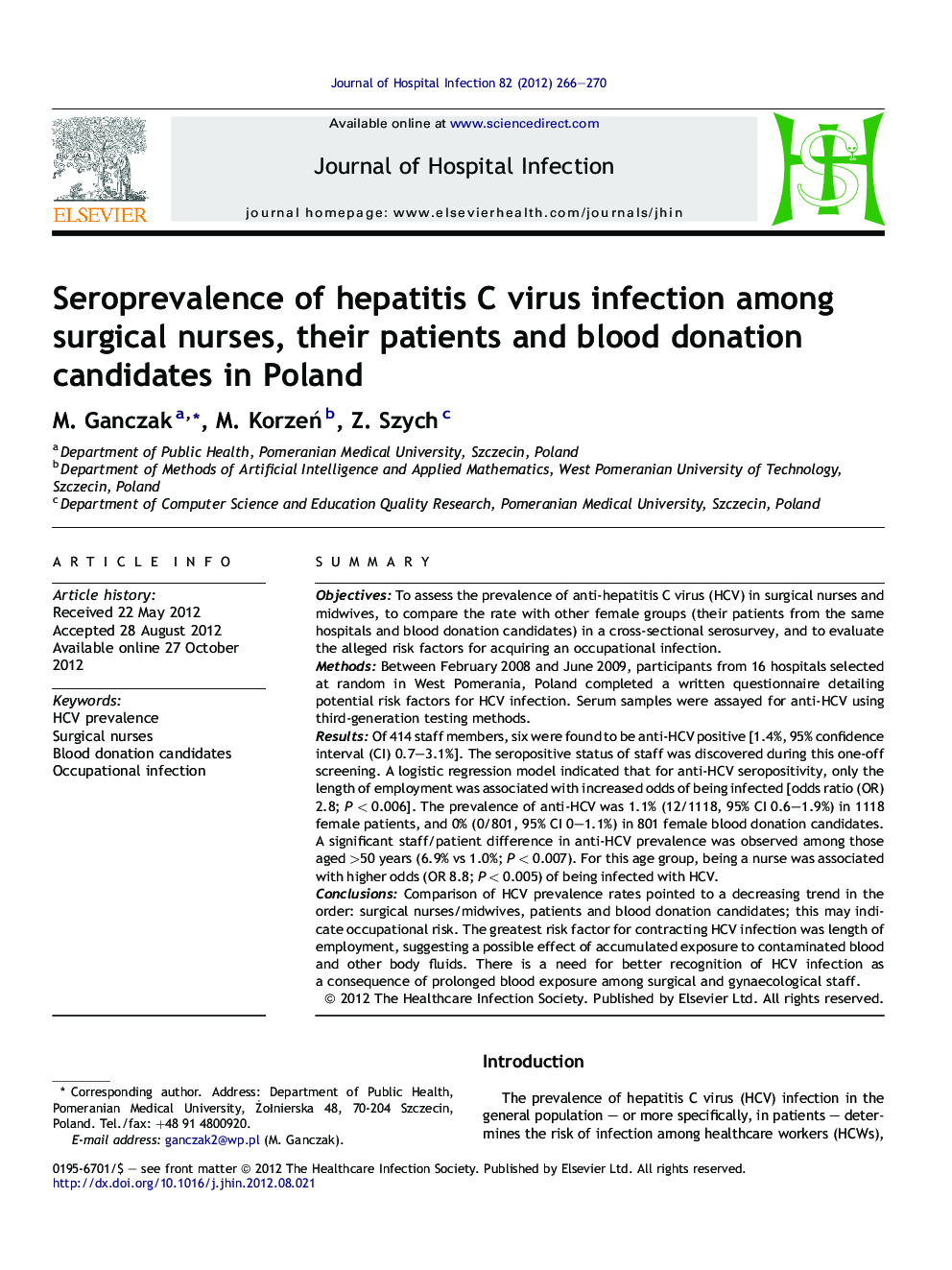| کد مقاله | کد نشریه | سال انتشار | مقاله انگلیسی | نسخه تمام متن |
|---|---|---|---|---|
| 3371911 | 1219235 | 2012 | 5 صفحه PDF | دانلود رایگان |

SummaryObjectivesTo assess the prevalence of anti-hepatitis C virus (HCV) in surgical nurses and midwives, to compare the rate with other female groups (their patients from the same hospitals and blood donation candidates) in a cross-sectional serosurvey, and to evaluate the alleged risk factors for acquiring an occupational infection.MethodsBetween February 2008 and June 2009, participants from 16 hospitals selected at random in West Pomerania, Poland completed a written questionnaire detailing potential risk factors for HCV infection. Serum samples were assayed for anti-HCV using third-generation testing methods.ResultsOf 414 staff members, six were found to be anti-HCV positive [1.4%, 95% confidence interval (CI) 0.7–3.1%]. The seropositive status of staff was discovered during this one-off screening. A logistic regression model indicated that for anti-HCV seropositivity, only the length of employment was associated with increased odds of being infected [odds ratio (OR) 2.8; P < 0.006]. The prevalence of anti-HCV was 1.1% (12/1118, 95% CI 0.6–1.9%) in 1118 female patients, and 0% (0/801, 95% CI 0–1.1%) in 801 female blood donation candidates. A significant staff/patient difference in anti-HCV prevalence was observed among those aged >50 years (6.9% vs 1.0%; P < 0.007). For this age group, being a nurse was associated with higher odds (OR 8.8; P < 0.005) of being infected with HCV.ConclusionsComparison of HCV prevalence rates pointed to a decreasing trend in the order: surgical nurses/midwives, patients and blood donation candidates; this may indicate occupational risk. The greatest risk factor for contracting HCV infection was length of employment, suggesting a possible effect of accumulated exposure to contaminated blood and other body fluids. There is a need for better recognition of HCV infection as a consequence of prolonged blood exposure among surgical and gynaecological staff.
Journal: Journal of Hospital Infection - Volume 82, Issue 4, December 2012, Pages 266–270